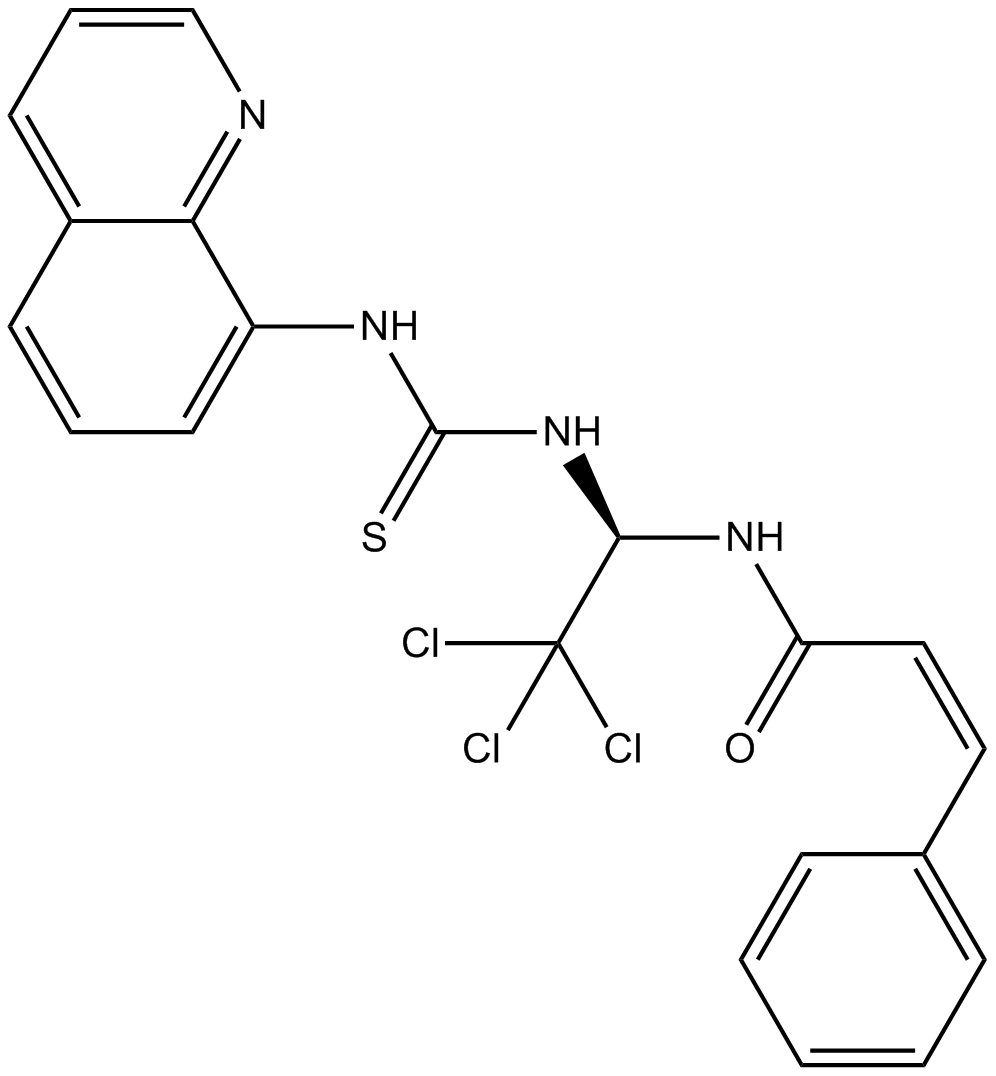Salubrinal |
| Catalog No.GC17331 |
Selective eIF2α inhibitor
Products are for research use only. Not for human use. We do not sell to patients.

Cas No.: 405060-95-9
Sample solution is provided at 25 µL, 10mM.
IC50: A cell-permeable and selective inhibitor of eIF2α dephosphorylation with an IC50 of 15 M.
The eukaryotic translation initiation factor 2 subunit α (eIF2α) is crucial in protein synthesis. eIF2α phosphorylation played an important role in protecting cells from apoptosis. Salubrinal selectively suppresses the phosphatase complexes that dephosphorylate eIF-2α. [1]
In vitro: This agent is reported to protect cells from endoplasmic reticulum (ER) stress-induced apoptosis (EC50 ~15 M) in PC12 cell lines induced with the protein glycosylation inhibitor tunicamycin and brefeldin A, which causes ER stress by blocking ER-to-Golgi vesicle transport. Salubrinal is a potentially useful agent to study mechanisms of ER stress-induced apoptosis. In addition, it was reported that salubrinal at 50 μM prevented cells from the autophagic and apoptotic progresses induced by loss of Bcl-2 function in murine leukemia L1210 cells. [1]
In vivo: Study from male ICR mice showed that salubrinal significantly aggravated the cisplatin-induced nephrotoxicity. In the kidneys of cisplatin-treated mice, the phosphorylation of eIF2α was significantly increased by salubrinal. In addition, the expression of CCAAT/enhancer binding protein, activating transcription factor 4 as well as the cleavage of caspases 3, 9 and 12 were also up-regulated. Moreover, salubrinal also increased the cisplatin-induced oxidative stress. These findings indicated that salubrinal aggravated cisplatin-induced nephrotoxicity via the up-regulation of ER stress-related cell apoptosis and oxidative stress. [2]
Clinical trial: So far, no clinical trial has been conducted.
References:
[1] Kessel D. Protection of Bcl-2 by salubrinal. Biochem Bioph Res Co. 2006; 346: 1320-3.
[2] Wu CT, Sheu ML, Tsai KS, Chiang CK and Liu SH. Salubrinal, an eIF2α dephosphorylation inhibitor, enhances cisplatin-induced oxidative stress and nephrotoxicity in a mouse model. Free Radic Biol Med, 2011; 51(3): 671-680.
Average Rating: 5 (Based on Reviews and 24 reference(s) in Google Scholar.)
GLPBIO products are for RESEARCH USE ONLY. Please make sure your review or question is research based.
Required fields are marked with *




















